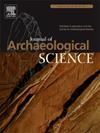我走在一条古老的道路上:分析罗马边境地区(公元1 - 5世纪)区域内和区域间连通性系统的简单方法
IF 2.6
1区 地球科学
Q1 ANTHROPOLOGY
引用次数: 0
摘要
本文提出了一种广泛可重复使用和直接的方法,用于研究罗马边境腹地的古代道路网络,同时关注区域内和区域间的连通性。它采用一系列工具——包括地理信息系统(GIS)、最低成本分析(LCA)、空间社会网络分析(SSNA)和可见度分析(VA)——来追踪和解释促进部队调动、货物运输和社会交流的道路系统。该研究通过对联合国教科文组织世界遗产“多瑙河沿岸”位于北诺利库姆(今奥地利)的一个特定地区的边境地区的调查,证明了这种方法,该地区跨越了公元1世纪中期到5世纪。通过整合考古数据、开放的政府数据集和先进的数字方法,分析揭示了各种可能支持军事后勤和民用旅行的途径。通过分析确定的选定道路随后可通过实地核查加以核实。论文还强调了谨慎解释的必要性,承认某些路径的假设性质以及通过所采用的方法追踪古代基础设施的固有局限性。本文章由计算机程序翻译,如有差异,请以英文原文为准。

I walk an ancient road: A straightforward methodology for analyzing intra- and inter-regional connectivity systems along Roman Frontier Zones (c. 1st—5th century AD)
This paper presents a broadly reusable and straightforward methodology for examining ancient road networks in the hinterlands of Roman frontiers, with attention to both intra- and inter-regional connectivity. It employs a range of tools—including Geographic Information Systems (GIS), Least Cost Analyses (LCA), Spatial Social Network Analysis (SSNA), and Visibility Analysis (VA)—to trace and interpret the road systems that facilitated troop movements, goods transport, and social exchange. The study exemplifies this methodology through an investigation of a frontier zone within a specific area of interest at the UNESCO World Heritage Site “Danube Limes” in Northern Noricum (modern Austria), spanning the mid-1st to the 5th century CE. By integrating archaeological data, open government datasets, and advanced digital methods, the analysis reveals a variety of pathways that may have supported military logistics and civilian travel across this strategically significant region. Selected roads identified through the analyses could be subsequently verified through ground-truthing.The paper also emphasizes the need for cautious interpretation, acknowledging the hypothetical nature of certain pathways and the inherent limitations of tracing ancient infrastructure through the methods employed.
求助全文
通过发布文献求助,成功后即可免费获取论文全文。
去求助
来源期刊

Journal of Archaeological Science
地学-地球科学综合
CiteScore
6.10
自引率
7.10%
发文量
112
审稿时长
49 days
期刊介绍:
The Journal of Archaeological Science is aimed at archaeologists and scientists with particular interests in advancing the development and application of scientific techniques and methodologies to all areas of archaeology. This established monthly journal publishes focus articles, original research papers and major review articles, of wide archaeological significance. The journal provides an international forum for archaeologists and scientists from widely different scientific backgrounds who share a common interest in developing and applying scientific methods to inform major debates through improving the quality and reliability of scientific information derived from archaeological research.
 求助内容:
求助内容: 应助结果提醒方式:
应助结果提醒方式:


